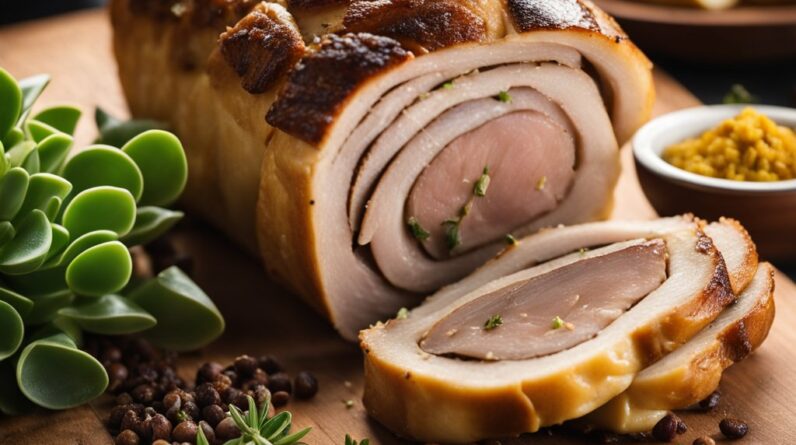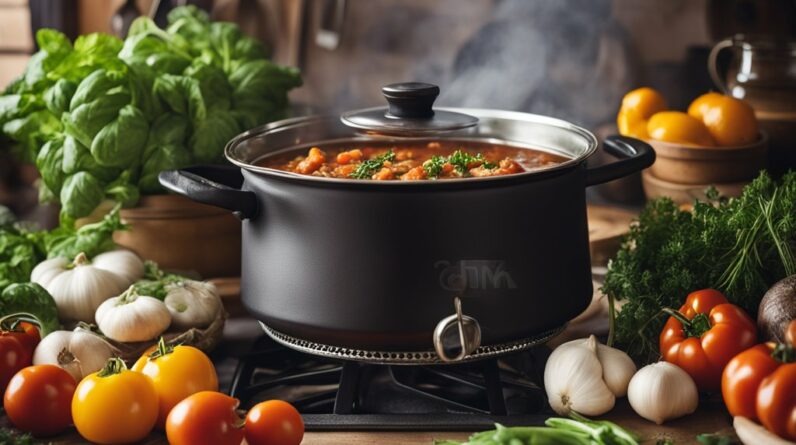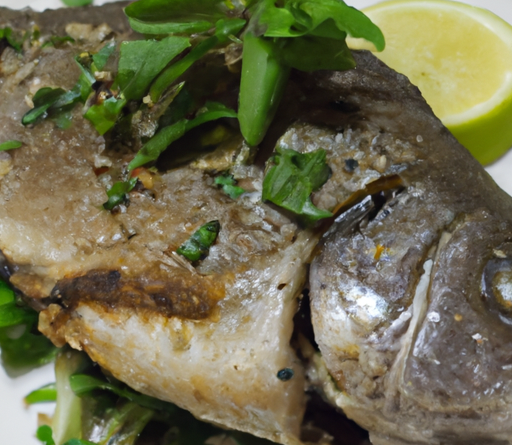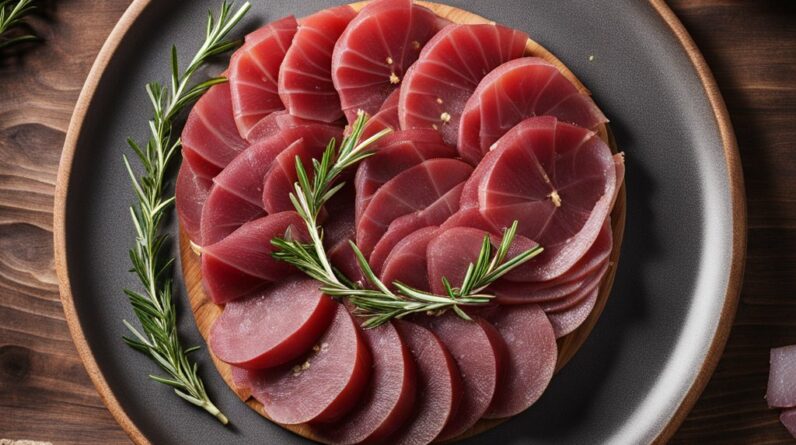Beginner’s Guide to Italian Cooking: Tips and Tricks for Mastering Classic Italian Dishes
Italian cuisine is known for its rich flavors and diverse ingredients, making it a popular choice for foodies around the world. However, for those who are new to Italian cooking, it can be overwhelming to know where to start. This beginner’s guide to Italian cooking aims to provide a comprehensive overview of the essentials of Italian cuisine, the fundamentals of Italian cooking, and classic Italian recipes to get you started on your culinary journey.
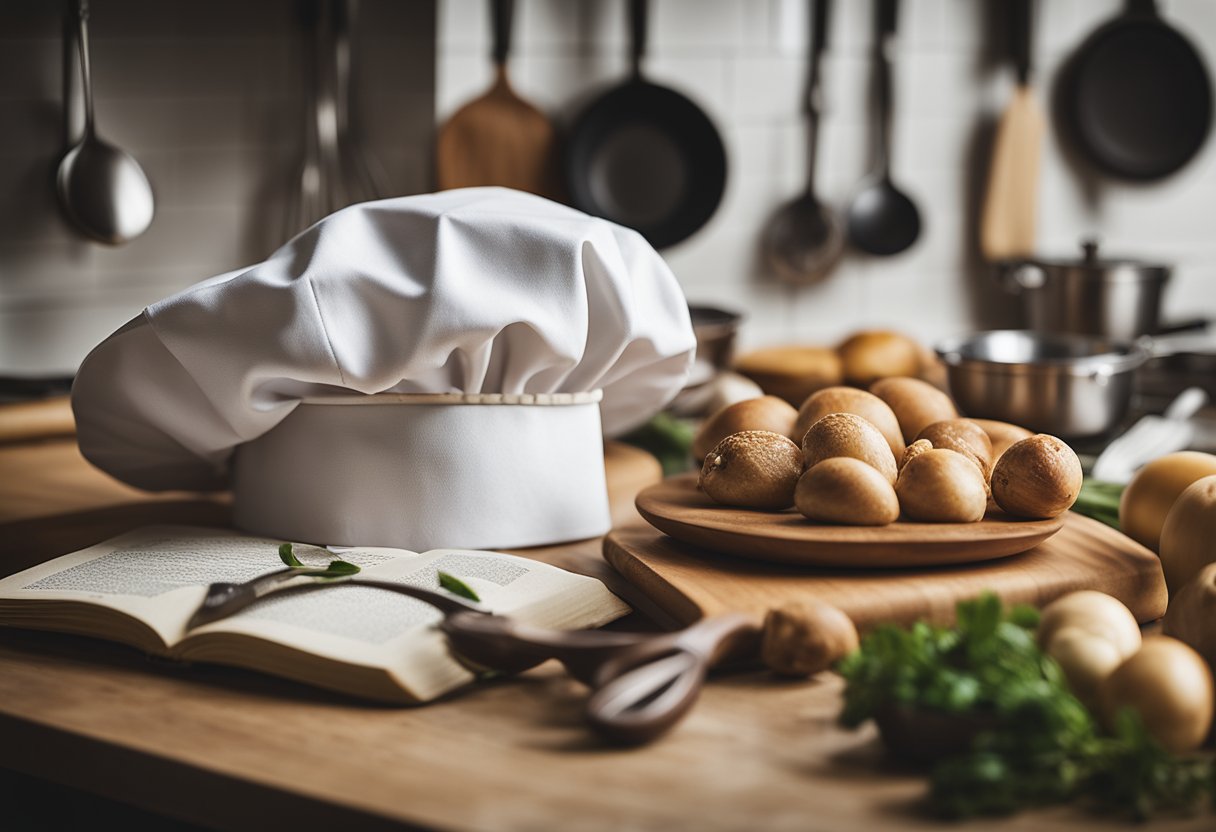
The essentials of Italian cuisine include a variety of ingredients such as pasta, tomatoes, olive oil, garlic, and herbs, which are used in many traditional Italian dishes. Understanding the role of these ingredients in Italian cooking can help you create authentic and flavorful dishes. In addition, learning about the different types of pasta and sauces can help you navigate Italian menus and prepare meals at home.
Fundamentals of Italian cooking include techniques such as sautéing, braising, and roasting, which are used to create the complex flavors and textures that are characteristic of Italian cuisine. Mastering these techniques can help you elevate your cooking skills and create delicious Italian dishes. Additionally, this guide includes classic Italian recipes such as spaghetti carbonara, lasagna, and tiramisu, which are perfect for beginners to try out and enjoy.
Key Takeaways
- Italian cuisine is known for its rich flavors and diverse ingredients.
- Understanding the essentials of Italian cuisine and fundamentals of Italian cooking can help beginners create authentic and flavorful dishes.
- Classic Italian recipes such as spaghetti carbonara, lasagna, and tiramisu are perfect for beginners to try out and enjoy.
Essentials of Italian Cuisine
Key Ingredients
Italian cuisine is known for its simple yet flavorful dishes that are made with fresh and high-quality ingredients. Some of the key ingredients used in Italian cooking include:
- Olive oil: Olive oil is a staple in Italian cuisine and is used for cooking, dressing salads, and flavoring dishes.
- Tomatoes: Tomatoes are used in a variety of Italian dishes, from pasta sauces to pizzas.
- Garlic: Garlic adds a pungent and savory flavor to many Italian dishes, such as pasta, soups, and stews.
- Basil: Basil is a fragrant herb that is commonly used in Italian cooking, especially in tomato-based sauces and pestos.
- Parmesan cheese: Parmesan cheese is a hard, aged cheese that is used to add a nutty and salty flavor to Italian dishes.
Basic Equipment
In addition to using high-quality ingredients, having the right equipment is also important for Italian cooking. Some of the basic equipment that every beginner should have in their kitchen include:
- Pasta pot: A large pot with a strainer insert is essential for cooking pasta, which is a staple in Italian cuisine.
- Chef’s knife: A sharp chef’s knife is necessary for chopping vegetables, herbs, and meat.
- Cutting board: A sturdy cutting board is needed for cutting and preparing ingredients.
- Saucepan: A medium-sized saucepan is useful for making sauces and soups.
- Skillet: A non-stick skillet is ideal for sautéing vegetables and cooking meats.
Overall, by using fresh and high-quality ingredients and having the right equipment, anyone can master the basics of Italian cuisine and create delicious dishes in their own kitchen.
Fundamentals of Italian Cooking
Cooking Techniques
Italian cooking is all about simplicity and using fresh, high-quality ingredients. To achieve the perfect Italian dish, it is important to master some basic cooking techniques.
One of the most important techniques in Italian cooking is sautéing. This involves cooking food quickly in a small amount of oil or butter over high heat. It is important to keep the food moving constantly to prevent it from burning.
Another important technique is braising, which involves cooking food slowly in a covered pot with a small amount of liquid. This technique is perfect for tougher cuts of meat, as the slow cooking process helps to break down the connective tissue and make the meat tender.
Finally, roasting is a popular technique in Italian cooking. This involves cooking food in the oven at a high temperature, which creates a crispy exterior while keeping the inside moist and tender.
Understanding Flavors
Italian cuisine is known for its bold, rich flavors. To create authentic Italian dishes, it is important to understand the key flavors and ingredients used in Italian cooking.
One of the most important flavors in Italian cuisine is garlic. This pungent ingredient is used in a wide variety of dishes, and can be used in both fresh and dried forms.
Another key ingredient in Italian cooking is olive oil. This flavorful oil is used in everything from dressings and marinades to sautéing and roasting.
Tomatoes are another essential ingredient in Italian cooking. Whether used fresh or canned, tomatoes add depth and flavor to sauces, stews, and soups.
Finally, herbs such as basil, oregano, and rosemary are commonly used in Italian cuisine. These fragrant herbs add a fresh, bright flavor to dishes, and are often used in combination with other ingredients to create complex and delicious flavors.
By mastering these fundamental cooking techniques and understanding the key flavors and ingredients used in Italian cooking, anyone can create delicious and authentic Italian dishes at home.
Classic Italian Recipes
Italian cuisine is known for its simplicity and use of fresh, high-quality ingredients. Classic Italian recipes have been passed down through generations and are still enjoyed today. Here are some of the most popular Italian dishes that you can make at home.
Appetizers & Salads
Caprese Salad
Caprese salad is a classic Italian dish that consists of fresh mozzarella, tomatoes, and basil. It’s a simple yet delicious appetizer that can be served as a light lunch or dinner. To make it, simply slice fresh tomatoes and mozzarella and arrange them on a plate. Drizzle with olive oil and balsamic vinegar, and sprinkle with salt and pepper. Garnish with fresh basil leaves.
Bruschetta
Bruschetta is another popular Italian appetizer that is easy to make. Toast slices of bread and top them with diced tomatoes, garlic, basil, and olive oil. You can also add some fresh mozzarella or Parmesan cheese for extra flavor.
Main Courses
Spaghetti Carbonara
Spaghetti carbonara is a classic Italian pasta dish that is made with bacon, eggs, and Parmesan cheese. Cook spaghetti according to package instructions. In a separate pan, cook bacon until crispy. In a bowl, whisk together eggs, Parmesan cheese, and black pepper. Drain the spaghetti and add it to the pan with the bacon. Remove from heat and add the egg mixture, stirring quickly to coat the pasta.
Chicken Parmesan
Chicken Parmesan is a hearty Italian dish that is perfect for a family dinner. Bread chicken breasts with seasoned breadcrumbs and fry until golden brown. Place the chicken in a baking dish and top with tomato sauce and mozzarella cheese. Bake in the oven until the cheese is melted and bubbly.
Desserts
Tiramisu
Tiramisu is a classic Italian dessert that is made with ladyfingers, espresso, mascarpone cheese, and cocoa powder. Dip ladyfingers in espresso and layer them in a dish. Spread a layer of mascarpone cheese on top and repeat the process. Finish with a sprinkle of cocoa powder.
Panna Cotta
Panna cotta is a creamy Italian dessert that is easy to make. Heat heavy cream, sugar, and vanilla extract in a saucepan until the sugar is dissolved. Remove from heat and stir in gelatin until dissolved. Pour the mixture into ramekins and refrigerate until set. Serve with fresh berries or a fruit sauce.
Meal Planning & Preparation
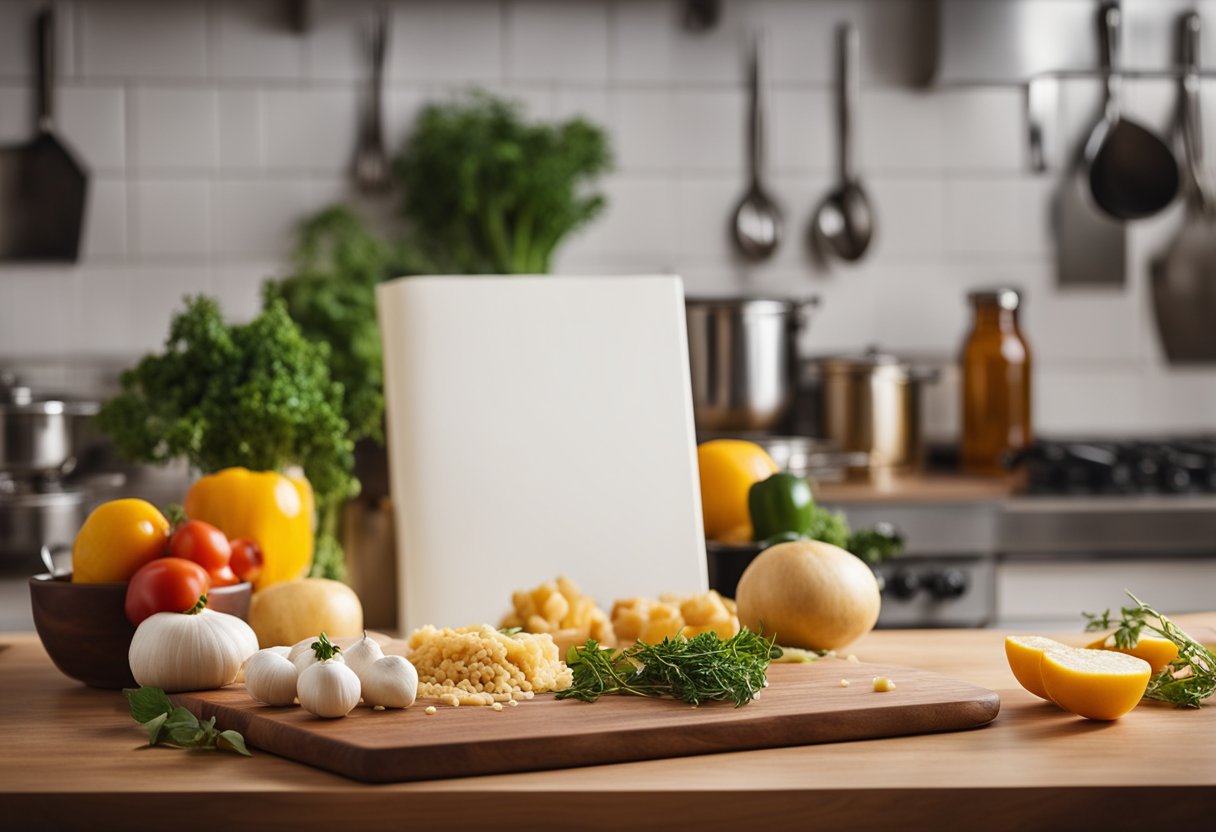
Shopping Tips
When it comes to meal planning for Italian cooking, it’s important to have a well-stocked pantry and fridge. Begin by creating a shopping list of essential ingredients such as olive oil, garlic, tomatoes, pasta, and herbs like basil and oregano. It is also important to have a variety of cheeses on hand, such as Parmigiano-Reggiano and mozzarella.
When shopping for fresh ingredients like produce and meat, it’s best to buy what is in season to ensure the best quality and flavor. If possible, visit a local farmer’s market to find fresh, locally sourced ingredients.
Prep Strategies
Preparation is key when it comes to Italian cooking. One strategy is to prepare ingredients ahead of time, such as chopping vegetables or cooking pasta, to save time during meal preparation.
Another important aspect of Italian cooking is timing. It’s important to have all ingredients prepped and ready to go before starting to cook. This includes having sauces and dressings made ahead of time and having all necessary equipment, such as pots and pans, ready to use.
Lastly, don’t be afraid to experiment with different flavors and ingredients to create your own unique Italian dishes. With practice and patience, anyone can become a master Italian home cook.
Navigating Italian Menus
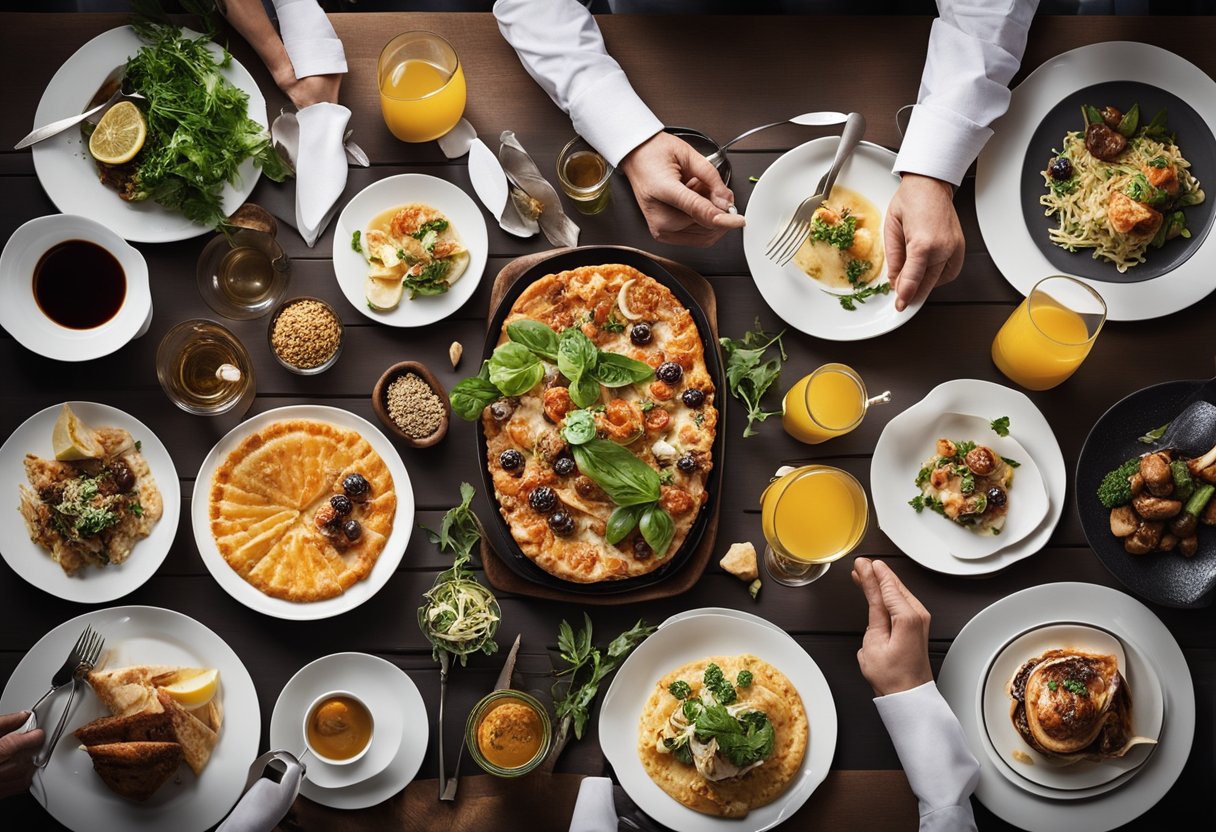
Common Dishes
Italian cuisine is known for its wide variety of dishes, and it can be overwhelming to navigate an Italian menu for the first time. However, there are a few common dishes that can be found in most Italian restaurants.
One of the most popular dishes is pizza, which is a flatbread topped with tomato sauce, cheese, and various toppings. Another popular dish is pasta, which comes in many different shapes and can be served with a variety of sauces. Some common pasta dishes include spaghetti carbonara, fettuccine alfredo, and lasagna.
In addition to pizza and pasta, Italian cuisine also includes a variety of meat and seafood dishes. Some popular meat dishes include veal parmigiana, chicken piccata, and osso buco. Seafood dishes include shrimp scampi, calamari, and linguine with clams.
Menu Phrases
Italian menus can be confusing, especially if you are not familiar with the language. However, there are a few key phrases that can help you navigate the menu.
One important phrase is “antipasti,” which refers to appetizers. Some popular antipasti dishes include bruschetta, caprese salad, and prosciutto and melon.
Another important phrase is “primi piatti,” which refers to first courses. This includes pasta dishes and risotto.
“Secondi piatti” refers to the main course, which usually consists of meat or seafood dishes.
Finally, “dolci” refers to desserts. Some popular Italian desserts include tiramisu, cannoli, and panna cotta.
By understanding these common dishes and menu phrases, you can confidently navigate an Italian menu and enjoy all that Italian cuisine has to offer.
Frequently Asked Questions
What are the essential ingredients in a traditional Italian kitchen?
A traditional Italian kitchen is well-stocked with fresh produce, high-quality meats, cheeses, and olive oil. Some of the essential ingredients include tomatoes, basil, garlic, onions, oregano, Parmesan cheese, and balsamic vinegar. Fresh pasta, risotto, and pizza dough are also staples in an Italian kitchen.
How can a beginner get started with making authentic Italian dishes?
To get started with making authentic Italian dishes, it is important to start with simple recipes and work your way up to more complex ones. It is also essential to use high-quality ingredients and follow the recipe closely. Beginners should focus on mastering basic techniques such as making fresh pasta, cooking risotto, and preparing tomato sauce from scratch.
What are some simple Italian recipes that are perfect for a dinner party?
Some simple Italian recipes that are perfect for a dinner party include bruschetta, caprese salad, eggplant parmesan, lasagna, chicken cacciatore, and tiramisu. These dishes are easy to prepare and are sure to impress your guests.
Can you suggest some vegetarian Italian dishes that are easy to prepare?
Some vegetarian Italian dishes that are easy to prepare include pasta primavera, margherita pizza, eggplant parmesan, minestrone soup, and caprese salad. These dishes are flavorful, healthy, and perfect for vegetarians and meat-lovers alike.
What are the fundamental techniques to master in Italian cuisine for a novice?
Novices in Italian cuisine should focus on mastering fundamental techniques such as making fresh pasta, cooking risotto, preparing tomato sauce from scratch, and properly seasoning dishes. It is also important to understand the importance of using high-quality ingredients and following recipes closely.
What are the typical meal structure and dining etiquette in Italy?
In Italy, meals are typically structured with antipasti (appetizers), primo (first course), secondo (second course), contorno (side dish), and dolce (dessert). Dining etiquette in Italy is formal, with table manners being highly valued. It is important to wait for the host to start eating, use utensils properly, and avoid talking with your mouth full.




